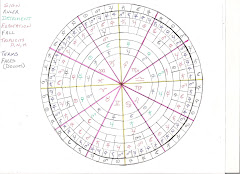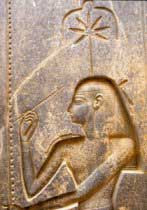Extract From "Essay 2. Ancient Egyptian Geography" by James P. Allen
Egypt itself was the center of the ancient Egyptian world; the counties around it were called simply xAswt "deserts". Egypt's southern border was at Aswan (Egyptian Abu), about 400 miles south of modern Cairo; beyond was the land of Nubia (from the ancient Egyptian word nbw "gold"). To the north lay the Mediterranean Ocean, known to the Egyptians as the "Great Blue-Green" (wAD-wr). For most of ancient Egyptian history Egypt was largely a desert, as it is today: life is only possible in this land because of the Nile (known in Egyptian only as jtrw "the river"). Because the Nile flows from south to north, the southern part of Egypt is known as Upper Egypt, and the northern part as Lower Egypt. This reflects the Egyptians own view, in which south was "up": in Egyptian, the words for "left" and "east" are the same (jAbt) and the word for "west" (jmnt) can also mean "right".
"Middle Egyptian - An Introduction to the Language and Culture of Hieroglyphs"
James P. Allen
Page 21
ISBN 0521774837
Seven of Cups
14 years ago



1 comment:
I have a secret obsession with ancient Egypt. I can't wait to read more!
If you have any questions during the 'thon, I'll be on AIM (sohorhapsody) and LJ (sohorhapsody.livejournal.com) for the next 24 hours. Good luck!
Post a Comment